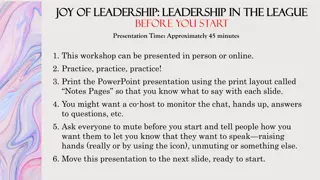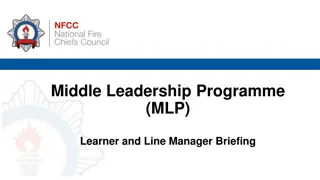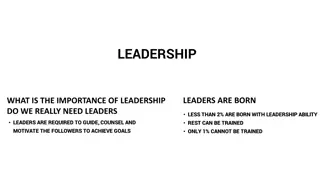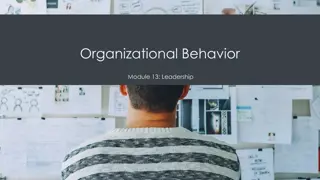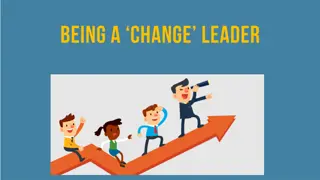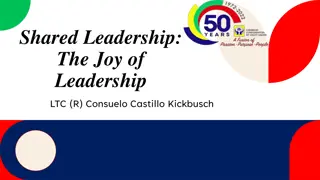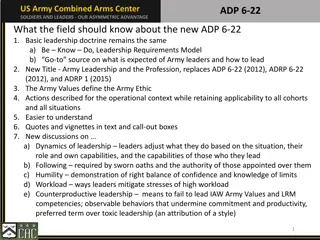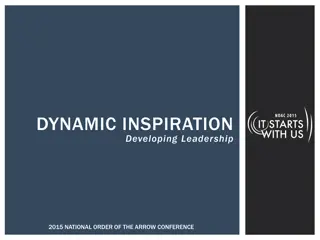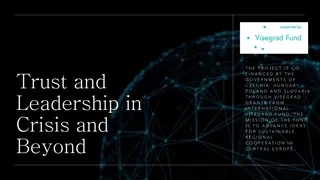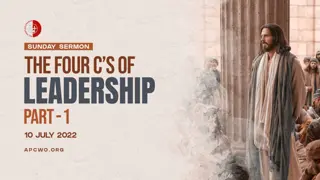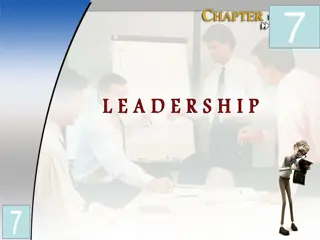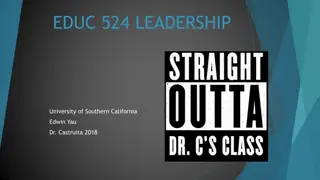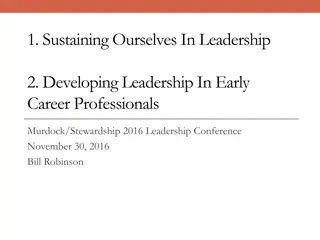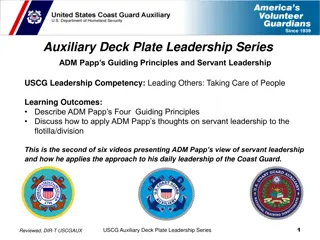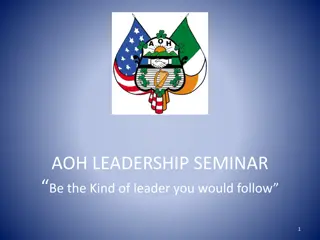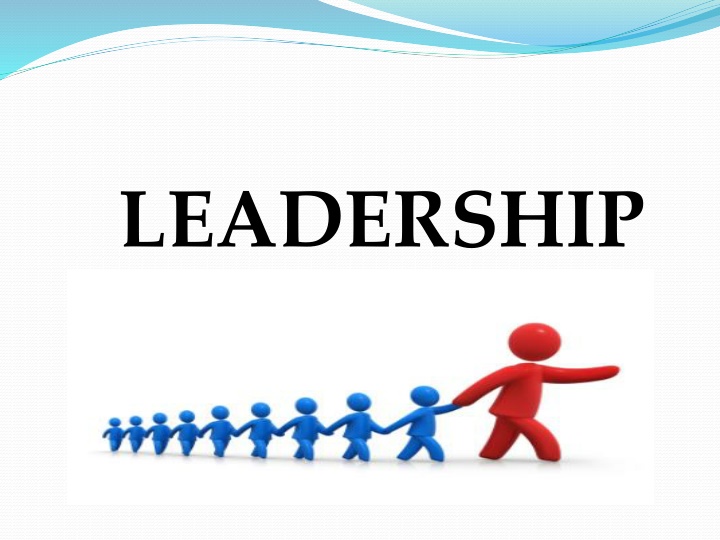
Leadership: Influence, Followers, and Styles Explained
Leadership is the art of influencing others towards achieving common goals. It involves interpersonal influence, the existence of followers, and adapting to situational demands. Explore the differences between managers and leaders, as well as leadership styles like autocratic and participative. Understand the benefits and disadvantages associated with each style to effectively lead and manage teams.
Download Presentation

Please find below an Image/Link to download the presentation.
The content on the website is provided AS IS for your information and personal use only. It may not be sold, licensed, or shared on other websites without obtaining consent from the author. If you encounter any issues during the download, it is possible that the publisher has removed the file from their server.
You are allowed to download the files provided on this website for personal or commercial use, subject to the condition that they are used lawfully. All files are the property of their respective owners.
The content on the website is provided AS IS for your information and personal use only. It may not be sold, licensed, or shared on other websites without obtaining consent from the author.
E N D
Presentation Transcript
LEADERSHIP Leadership is the process of influencing others towards the accomplishment of goals. It is the ability to induce subordinates to work with zeal and confidence. In short, it is the activity of influencing people to strive willingly for group objectives.
FEATURES OF LEADERSHIP EXISTENCE OF FOLLOWERS Leadership does not flourish in isolation. It requires followers. INTERPERSONAL INFLUENCE It is the knack of getting other people follow you, and do things willingly. TWO WAY PROCESS A leader influences his followers and gain authority over them by group consensus.
CONTINUED COMMON GOALS The basic objective of leadership is achievement of common goals of the group. SITUATIONAL The qualities, skills and characteristics of a leader are determined by the demands of the situation.
MANAGERS AND LEADERS LEADERSHIP MANAGEMENT Narrow term Wider term. A manager is more than a leader Requires an organization structure. It implies exercising functions like planning, directing, etc. Leadership is one of these functions. Managers get formal authority. Managers are concerned with organizational goals. Exists in unorganized groups also. Leadership is the activity of influencing people to strive willingly for group goals. Leaders get authority by virtue of their skills. Leaders are sensitive to follower s needs.
LEADERSHIP STYLES DIRECTIVE OR AUTOCRATIC STYLE Leader makes most decisions without consulting other group members. Leader controls group members by using rewards and discipline. Leader permits very little individual freedom of action. Group members are dependent on the leader to establish goals and plan activities.
BENEFITS Decisions can be made very rapidly. DISADVANTAGES Tends to reduce creativity. Control can be centralized for orderly operations. Group members may avoid responsibility.
PARTICIPATIVE OR DEMOCRATIC STYLE Leader involves individuals in decision making and goal setting. Authority and responsibility are delegated to group members. The leader uses two-way communication. Attitudes and feelings are considered by the leader.
BENEFITS DISADVANTAGES Participation can result in high motivation of group members. Individual abilities can be developed through participation. Individuals may dominate participation. Compromise can result in actions that are not the most effective.
FREE REIN OR PERMISIVE STYLE People are permitted to function essentially on their own. The major influence on goals and procedures is desire of group members. Communication is open, and can take any direction.
BENEFITS DISADVANTAGES May encourage suggestions, creativity and innovations. Group objectives may be ignored. Group is flexible and can adapt quickly to change. Can lead to lack of coordination of group activities.
Which style of leadership is described in the statements mentioned below: 1. I would not try to socialize with the workers 2. I would try to make each worker feel that his or her contribution is important 3. I would allow my team members the freedom to do their jobs in their own way

